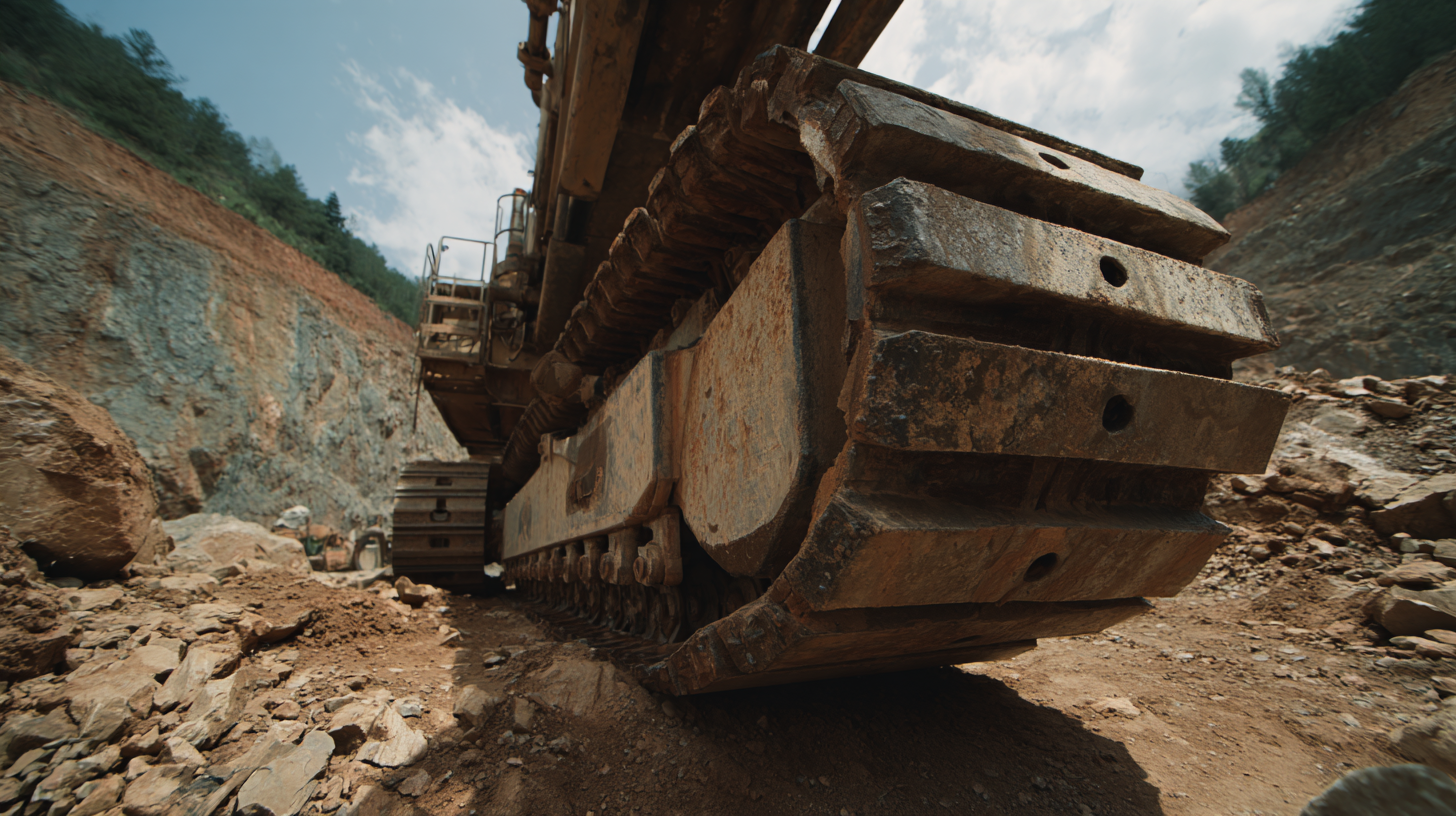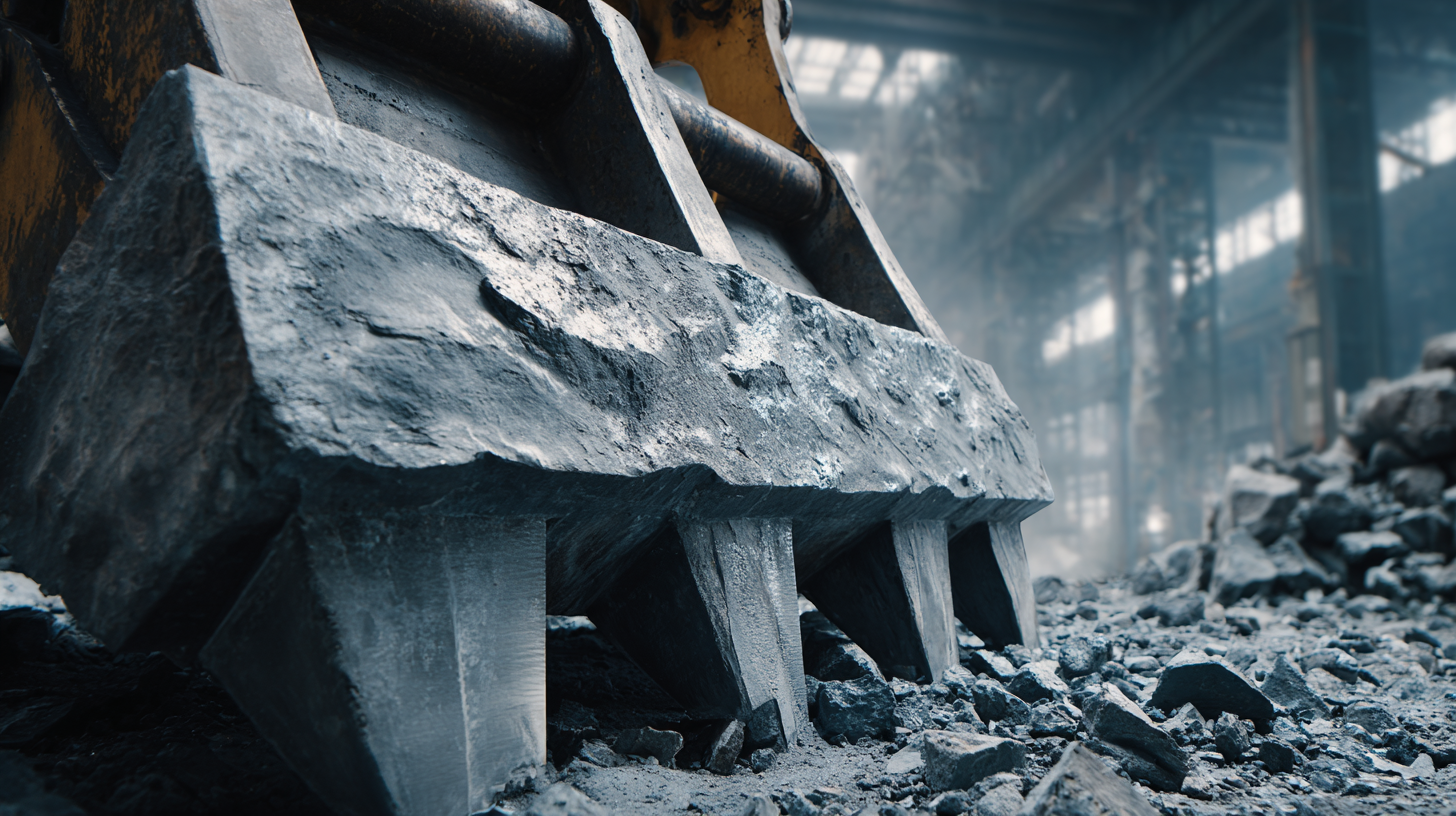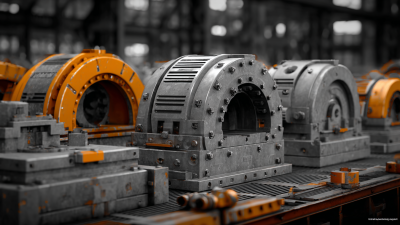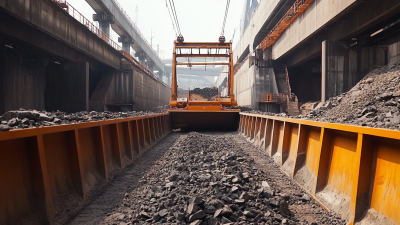In the ever-evolving landscape of modern quarry operations, the role of Mining Stone Jaw Plate has emerged as a critical component in ensuring efficiency and productivity. According to a report by GlobalData, the global mining equipment market is projected to reach USD 192 billion by 2026, with crushing and screening equipment, including jaw plates, representing a significant portion of this growth. As quarries strive to optimize their output and reduce operational costs, the durability and performance of mining stone jaw plates directly impact the overall productivity of aggregate production. Industry studies reveal that well-maintained jaw plates can enhance throughput by up to 30% while minimizing downtime due to wear and tear. Therefore, understanding the essential role of Mining Stone Jaw Plates is vital for quarry operators aiming to maintain competitive advantage in this robust sector.

Stone jaw plates are an integral component of modern quarry operations, playing a critical role in enhancing crushing efficiency. These plates are designed to withstand the tremendous forces exerted during the crushing process, providing the necessary strength and durability to handle various types of materials, from soft stones to hard aggregates. The precision engineering of jaw plates ensures optimal interlocking with the materials, allowing for a more effective and consistent crushing action.
Moreover, the material composition of stone jaw plates significantly influences their performance and longevity. High-quality, wear-resistant materials reduce the frequency of replacements and maintenance, which translates into lower operational costs for quarry operators. Improved crushing efficiency not only maximizes productivity but also leads to higher quality output, meeting the growing demands of the construction industry. In essence, investing in the right stone jaw plates is vital for streamlining operations and sustaining competitive advantage in the ever-evolving market landscape.
The longevity of jaw plates in quarry operations is influenced by several critical factors, including material selection, design specifications, and operational practices. High-quality materials, such as manganese steel, are essential for enhancing wear resistance and durability. The metallurgy of the jaw plates directly affects their ability to withstand the harsh conditions of crushing hard stone, making it imperative for operators to select components that meet the demands of their specific applications.

Additionally, proper sizing and feeding techniques play a significant role in maximizing the lifespan of jaw plates. Ensuring that the jaw crusher is appropriately sized for the material being processed not only improves operational efficiency but also reduces unnecessary wear on the plates. Operators should implement optimal feed practices, maintaining a consistent flow of material to avoid overloading the crusher.
Regular inspections and maintenance can further extend the life of these crucial components, ensuring that quarry operations run smoothly and efficiently, thus allowing for sustained productivity and reduced downtime.
In modern quarry operations, the importance of high-quality mining stone jaw plates cannot be overstated. These components play a critical role in the crushing process, directly impacting both productivity and operational costs. When analyzing the cost-benefit ratio of quality jaw plates, it becomes evident that investing in superior materials can lead to significant savings in the long run. While the initial costs may be higher, the durability and efficiency of quality jaw plates result in prolonged equipment lifespan and reduced downtime, ultimately enhancing profitability.
Tips: Ensure that you regularly assess the wear and tear of your jaw plates. Early identification of issues can prevent costly disruptions in operations. Additionally, consider sourcing jaw plates from reputable manufacturers who offer warranties and support, as this can further enhance your cost-benefit ratio.
Moreover, the choice of jaw plates can influence the quality of the crushed product. High-quality plates not only provide better performance but also reduce the risk of contamination in the output material. Exploring alternative materials or specialized coatings can also yield better results, allowing for increased efficiency in crushing while maintaining the integrity of the end product.

The performance and durability of jaw plates are significantly influenced by their material composition. High-carbon steel, manganese steel, and other specialized alloys are commonly used to manufacture these essential components for quarry operations. Manganese steel, in particular, is favored for its excellent work hardening properties, which enable it to withstand the high-impact forces encountered during crushing operations. This material composition not only enhances the wear resistance of jaw plates but also extends their operational lifespan, thereby reducing maintenance costs and downtime.
In addition to the choice of base materials, the manufacturing process also plays a crucial role in determining the jaw plates' overall effectiveness. Techniques such as casting and forging can influence the microstructure of the material, resulting in variations in hardness and toughness. By optimizing both material selection and production methods, quarry operators can achieve a balance between toughness and ductility, ensuring that jaw plates can endure the demanding conditions of modern mining operations while maximizing performance. As such, the careful consideration of material composition and manufacturing techniques is integral to enhancing the reliability and efficiency of jaw plates in quarry environments.
| Material Composition | Impact on Durability (Hours) | Resistance to Wear (Rating) | Cost per Unit ($) | Applications |
|---|---|---|---|---|
| High Manganese Steel | 2000 | 9.5 | 150 | Granite, Limestone |
| Alloy Steel | 1800 | 8.5 | 120 | Quartzite, Basalt |
| Wear-Resistant Composite | 2500 | 9.8 | 200 | Sandstone, Slate |
| Carbide Steel | 3000 | 9.9 | 300 | Marble, Gypsum |
Recent advancements in jaw plate design have transformed how quarries operate, enhancing efficiency and productivity. According to the latest industry report by Allied Market Research, the global mining equipment market is projected to reach $215 billion by 2025, with a significant portion attributed to innovations in componentry like jaw plates. These innovations focus on improving material resilience and wear resistance, leading to longer operational lifetimes. For instance, the introduction of high-manganese steel formulations has shown to increase lifespan by up to 30%, reducing replacement costs and downtime.
Moreover, the integration of technology in jaw plate design is revolutionizing performance metrics. Smart sensors are being incorporated to monitor wear patterns in real-time, allowing operators to optimize maintenance schedules effectively. A study from the Mining Association indicates that real-time monitoring can improve operational efficiency by 20%, leading to increased output and reduced operational costs. As quarry operations continue to evolve, the role of innovative jaw plate designs becomes increasingly vital, providing a competitive edge in a rapidly changing industry landscape.









